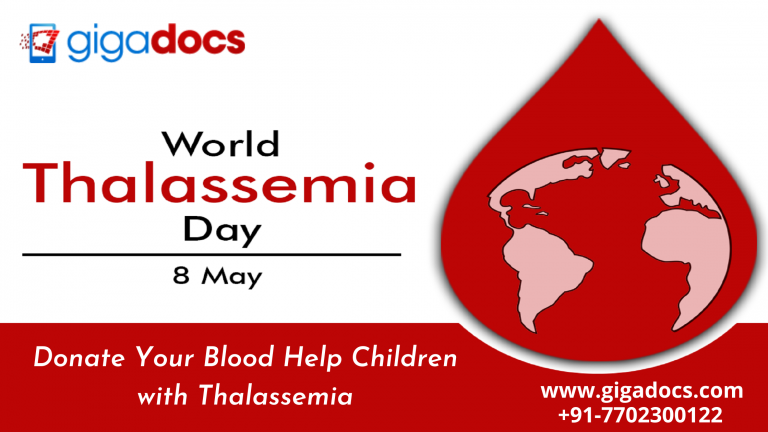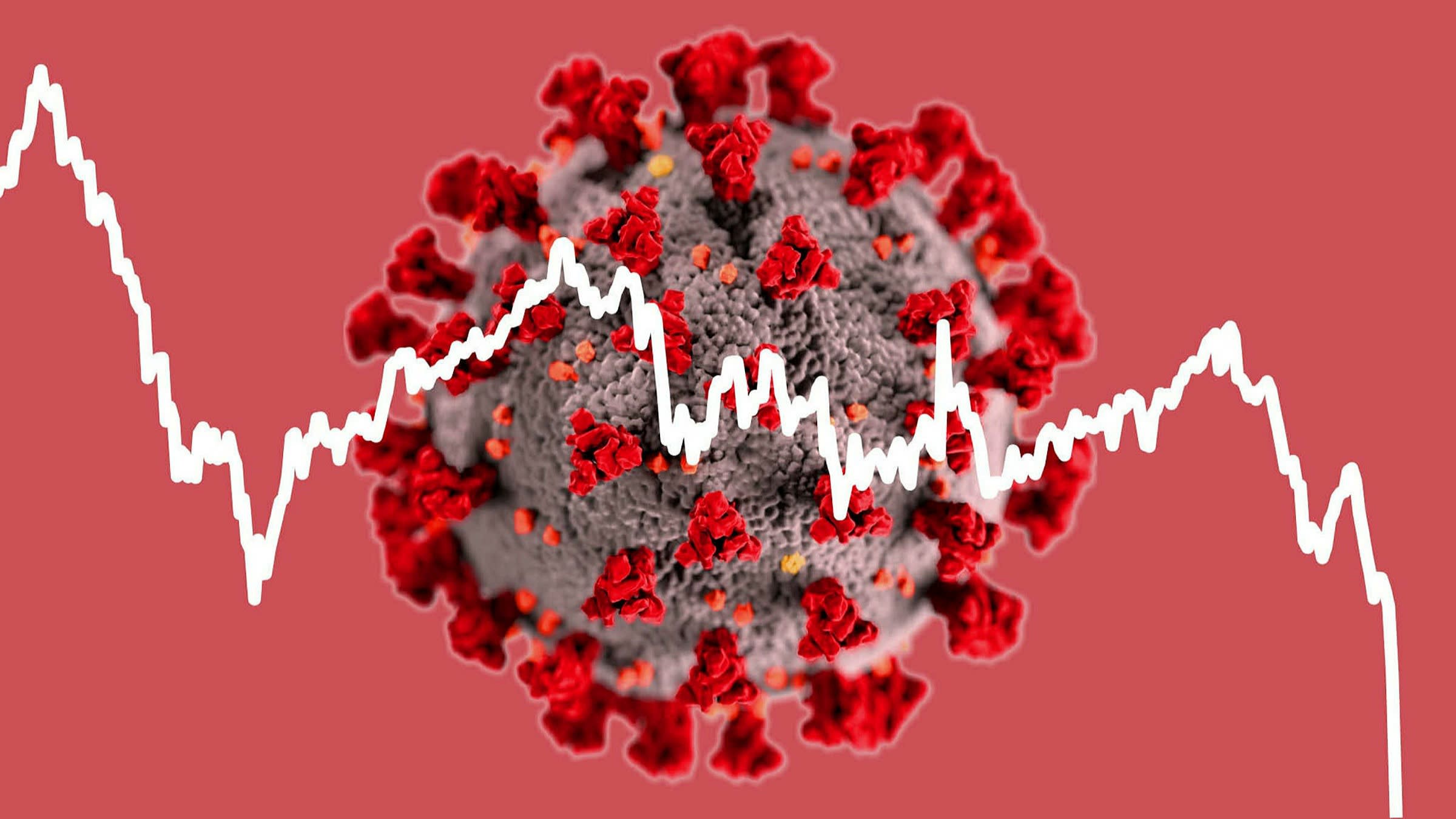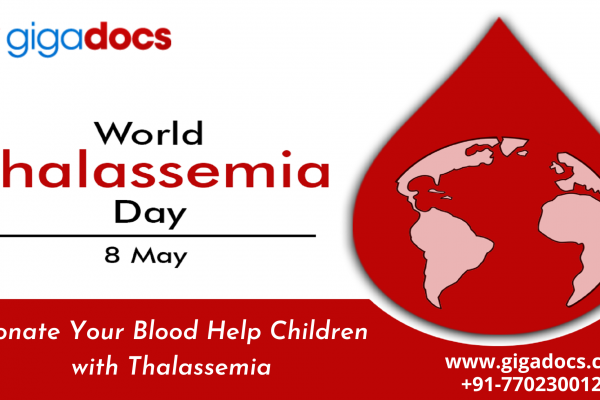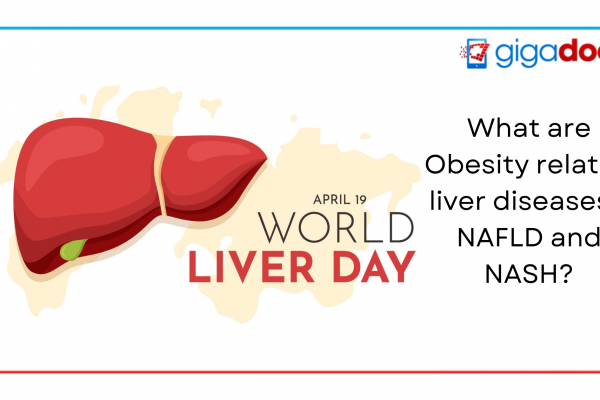Thalassemia (also spelled thalassaemia) is an inherited blood disorder characterized by abnormal production of hemoglobin, the protein responsible for carrying oxygen in red blood cells. It is caused by genetic mutations that affect the production of globin chains, the building blocks of hemoglobin.
Usually, hemoglobin comprises four globin chains—two alpha globin chains and two beta globin chains. In thalassemia, there are defects or deficiencies in one or both types of globin chains. The severity of the condition depends on the specific mutations and the number of affected globin chains.
How do I find out if I have Thalassaemia?
Check with these symptoms if you suspect that you may have thalassemia or have a family history of the condition –
- Enlarged Spleen: Thalassemia can cause an enlarged spleen (splenomegaly), resulting in abdominal discomfort or a feeling of fullness.
- Frequent Infections: Thalassemia can weaken the immune system, making individuals more susceptible to respiratory infections.
- Delayed Growth and Development: Children with severe forms of thalassemia may experience delayed growth and development.
- Facial Bone Deformities: In some cases, thalassemia can affect the bone structure of the face, leading to facial deformities, including a prominent forehead, flat nose bridge, and an overgrowth of the upper jawbone.
- Poor Appetite and Weight Loss: Some individuals with thalassemia may experience a reduced appetite and subsequent weight loss.
- Fatigue and Weakness: People with thalassemia may experience ongoing fatigue and weakness due to the reduced capacity of their red blood cells to carry oxygen.
- Pale or Jaundiced Skin: Thalassemia can cause paleness of the skin, mucous membranes, and nail beds. In more severe cases, it can lead to jaundice, characterized by a yellowing of the skin and eyes.
- Shortness of Breath: Anemia from thalassemia can reduce oxygen supply to tissues and organs, causing shortness of breath, especially during physical exertion.
It’s important to note that the symptoms can vary significantly among individuals. Some people with thalassemia may have mild or asymptomatic symptoms, while others may experience more severe manifestations.
What is World Thalassaemia Day?
World Thalassaemia Day is observed on May 8th each year to raise awareness about thalassemia, its impact on individuals and families, and the importance of prevention and treatment strategies. World Thalassaemia Day serves as a reminder of the ongoing efforts needed to combat thalassemia and improve the quality of life for individuals with this condition.
What are the different types of Thalassemia?
There are several types of thalassemia, which can be broadly categorized into two main types. Within each type of thalassemia, further variations and subtypes can be based on specific gene mutations and their effects, which can vary among individuals. The classification is based on the affected globin chains: alpha thalassemia and beta thalassemia. Let’s learn more about them-
Thalassaemia Minor-
Thalassemia minor, also known as beta thalassemia minor or thalassemia trait, is characterized by one mutated or non-functional beta-globin gene. It is an inherited condition typically less severe than beta thalassemia major (Cooley’s anemia).
In thalassemia minor, individuals have a reduced production of beta-globin chains needed to form normal hemoglobin. However, they usually have one normal beta globin gene, allowing for the production of enough functional hemoglobin to prevent significant symptoms.
Here are some key characteristics of thalassemia minor:
- Mild Anemia: Thalassemia minor typically leads to mild anemia, which is a condition characterized by a lower-than-normal number of red blood cells or a decreased hemoglobin level. The anemia may cause mild fatigue or weakness but usually does not require treatment.
- Normal Growth and Development: Individuals with thalassemia minor usually have normal growth and development. They may not experience any symptoms during childhood and may be unaware of their condition until adulthood, or it may be detected incidentally during routine blood tests.
- Carrier Status: Thalassemia minor is considered a carrier state, meaning individuals with thalassemia minor carry the gene mutation and can pass it on to their children. If both parents have thalassemia minor, there is a 25% chance of having a child with thalassemia major, a 50% chance of having a child who is a carrier like the parents, and a 25% chance of having a child with normal hemoglobin.
- No Regular Treatment Required: Most individuals with thalassemia minor do not require regular treatment. However, they must know their carrier status and consider genetic counseling before planning a family. They may also need to inform healthcare providers about their thalassemia minor status when interpreting blood test results or if they require surgery or blood transfusions.
Thalassaemia major-
Thalassemia major, also known as beta thalassemia major or Cooley’s anemia, is the most severe form of beta-thalassemia. It is an inherited blood disorder characterized by the absence or severe reduction in producing functional beta globin chains, essential hemoglobin components.
In thalassemia major, both beta-globin genes are mutated or non-functional, resulting in a significant deficiency of beta-globin chains. As a result, the production of normal hemoglobin is severely impaired, leading to severe anemia and other complications.
Here are some key characteristics of a thalassemia major:
- Severe Anemia: Thalassemia major causes severe anemia, which is a condition characterized by a significantly reduced number of red blood cells or very low hemoglobin levels. This leads to fatigue, weakness, pale skin, and shortness of breath.
- Early Onset: Symptoms of thalassemia major typically appear within the first two years of life, as fetal hemoglobin production decreases and adult hemoglobin should take over. Infants with thalassemia major may exhibit poor growth, failure to thrive, and other signs of severe anemia.
- Blood Transfusions: Individuals with thalassemia major require lifelong regular blood transfusions to maintain adequate hemoglobin levels and prevent life-threatening complications associated with severe anemia. Transfusions need to be carefully managed to avoid iron overload.
- Iron Overload: Regular blood transfusions can lead to iron overload in the body since the excess iron from transfused blood is not easily eliminated. Iron overload can damage organs like the heart, liver, and endocrine glands. Therefore, iron chelation therapy, which involves medication to remove excess iron, is necessary to prevent complications.
- Bone Marrow Transplant: Bone marrow transplant, or hematopoietic stem cell transplantation, is the only known curative treatment for thalassemia major. It involves replacing the faulty bone marrow with healthy stem cells to restore normal blood cell production. This treatment option may be considered for eligible patients, usually at a young age, and requires a suitable donor.
Thalassemia major is a complex lifelong condition requiring careful management and ongoing medical care.
Iron Overload in Beta Thalassaemia Major Patients
Iron overload is a significant concern for individuals with beta-thalassemia major. The repeated blood transfusions necessary to manage their condition can lead to excess iron accumulation in the body over time. Since the body has no efficient mechanism to eliminate excess iron, it can build up in organs and tissues, causing damage and various complications. Here’s more information about iron overload in beta-thalassemia major patients:
- Transfusion-Related Iron Overload: Each blood transfusion provides a new supply of iron-rich red blood cells. However, the body cannot regulate the amount of iron received through transfusions, leading to gradually accumulating iron over time. Regular and lifelong transfusions in thalassemia major patients increase the risk of iron overload.
- Impact on Organs: Iron overload primarily affects the liver, heart, pancreas, and endocrine glands. Excess iron is stored in these organs, causing damage and impairing their function. Over time, iron overload can lead to complications such as liver fibrosis, cirrhosis, heart failure, arrhythmias, diabetes, and hormonal imbalances.
- Monitoring Iron Levels: Iron levels are crucial in managing iron overload. Serum ferritin levels, which indicate the body’s iron stores, are commonly measured.
Thalassaemia in Pregnancy
Thalassemia can pose unique challenges during pregnancy, particularly for individuals with thalassemia major or thalassemia intermedia. Here are some key considerations regarding thalassemia in pregnancy:
- Preconception Counseling: Individuals with thalassemia planning to become pregnant should seek preconception counseling from their healthcare provider. This allows for a comprehensive assessment of the individual’s health, iron status, and overall readiness for pregnancy. It also helps in discussing potential risks and developing a tailored care plan.
- Increased Monitoring: Pregnant women with thalassemia require regular monitoring throughout pregnancy to ensure optimal health for both the mother and the fetus. This includes frequent blood tests to assess hemoglobin levels, iron status, and other relevant parameters.
- Iron Supplementation: Iron supplements are generally not recommended for individuals with thalassemia, as they already have excess iron due to blood transfusions. However, in some cases, iron supplementation may be necessary during pregnancy if iron levels are low and carefully monitored by healthcare professionals.
- Blood Transfusions: For individuals with major or severe thalassemia intermedia, maintaining regular blood transfusions remains essential during pregnancy to ensure adequate oxygen supply to the developing fetus. Close coordination between the thalassemia care team and the obstetrician is essential to manage transfusions safely during pregnancy.
- Iron Chelation Therapy: Iron chelation therapy may need to be adjusted or temporarily suspended during pregnancy, as some chelation agents may not be considered safe for the developing fetus. The healthcare team will determine the appropriate management strategy based on the individual’s circumstances.
- Fetal Monitoring: Regular fetal monitoring through ultrasounds and other tests may be conducted to assess the well-being and growth of the fetus. This helps identify any potential complications associated with thalassemia or pregnancy.
- Genetic Counseling: Thalassemia is an inherited condition, and if both parents carry the thalassemia gene, there is a risk of passing thalassemia on to the child. Genetic counseling before pregnancy can help individuals understand their risk, explore options such as prenatal testing, and make informed decisions.
- Maternal Health and Care: Pregnant individuals with thalassemia should focus on maintaining good overall health through a balanced diet, regular exercise, and adequate rest. They should closely follow their healthcare provider’s recommendations regarding prenatal vitamins, folic acid supplementation, and other aspects of prenatal care.
Pre-Pregnancy Test for Thalassaemia
Pre-pregnancy testing for thalassemia is essential for individuals with a family history of thalassemia or belonging to populations with a higher prevalence of the condition. Pre-pregnancy testing aims to identify carriers of thalassemia or individuals with thalassemia minor (trait) before they plan to have children. This knowledge allows for informed decision-making and appropriate counseling to understand the risk of passing thalassemia to the offspring. Here are some common tests used for pre-pregnancy thalassemia screening:
- Complete Blood Count (CBC): A complete blood count is a basic blood test that provides information about the number and quality of different blood cells, including red blood cells. Individuals with thalassemia minor may show characteristic red blood cells indices, such as microcytosis (smaller-than-normal red blood cells) and hypochromia (pale red blood cells).
- Family History Assessment: A thorough family history assessment is crucial in identifying individuals at risk for thalassemia. Inquire about known cases of thalassemia or related blood disorders in the family and the ethnic background, as certain populations have a higher prevalence of thalassemia.
- Genetic Testing: Genetic testing can provide the most accurate and definitive diagnosis of thalassemia. It involves analyzing DNA samples to identify specific gene mutations associated with thalassemia. Genetic testing can detect thalassemia carriers and determine the risk of having a child with a thalassemia major. It is usually performed through specialized laboratories and may involve examining the alpha and/or beta globin genes.
The specific tests recommended may vary based on factors such as regional prevalence, ethnic background, and availability of resources.
How will having Thalassaemia affect my Pregnancy?
The impact of thalassemia on pregnancy can vary depending on the severity of the condition and individual factors. Here are some key considerations regarding how thalassemia may affect pregnancy:
- Thalassemia Trait (Minor):
- Thalassemia minor usually has minimal impact on pregnancy. Most individuals with thalassemia trait have normal pregnancies and give birth to healthy babies.
- Thalassemia Major or Intermedia:
- Thalassemia major or intermedia, which are more severe forms of thalassemia, can pose additional challenges during pregnancy.
- Thalassemia major or intermedia can cause chronic anemia, which may worsen during pregnancy due to increased blood volume requirements. Close monitoring of hemoglobin levels and regular blood transfusions may be necessary to maintain adequate oxygen supply to the mother and the developing fetus.
- Iron overload can be a concern if you receive regular blood transfusions for thalassemia. Iron chelation therapy may need to be adjusted during pregnancy to balance the need for managing iron levels while ensuring the safety of the fetus.
- Pregnant mothers with thalassemia major or intermedia require more frequent monitoring, including regular blood tests and ultrasounds, to assess maternal health, fetal well-being, and growth.
- Thalassemia-related complications such as cardiac, liver, and endocrine abnormalities can impact pregnancy.
Thalassemia is an inherited condition, and if both parents carry the thalassemia gene, there is a risk of passing thalassemia on to the child. Genetic counseling before pregnancy can help expectant mothers understand their risk and explore options such as prenatal testing. We suggest expectant mothers regularly consult with hematologists, obstetricians, and genetic counselors, to ensure the best possible outcomes for you and their babies.
How do I find out if my unborn baby has Thalassaemia?
Several prenatal screening and diagnostic tests are available to determine if your unborn baby has thalassemia. The tests recommended may vary depending on regional practices, healthcare resources, and personal circumstances. Here are some common methods used to detect thalassemia during pregnancy:
- Chorionic Villus Sampling (CVS): CVS is an invasive diagnostic test performed between 10 and 13 weeks of pregnancy. CVS can detect thalassemia and other genetic disorders with a high degree of accuracy, but it carries a small risk of complications, including miscarriage.
- Amniocentesis: Amniocentesis is another invasive diagnostic test performed typically between 15 and 20 weeks of pregnancy. It involves extracting a small amount of amniotic fluid surrounding the baby and analyzing the fetal cells within the fluid for genetic abnormalities, including thalassemia. Like CVS, amniocentesis carries a small risk of complications.
- Fetal DNA Analysis: In some cases, if thalassemia is suspected, fetal DNA analysis may be performed using techniques such as cordocentesis or percutaneous umbilical blood sampling (PUBS). These procedures involve sampling the baby’s blood directly from the umbilical cord to analyze the fetal DNA and confirm the presence of thalassemia or other genetic disorders. Fetal DNA analysis is an invasive procedure with a small complication risk.
- Carrier Screening: Thalassemia carrier screening is performed before or early in pregnancy. It involves analyzing a blood sample from both parents to determine if they carry thalassemia gene mutations. If both parents are carriers, there is a risk of passing thalassemia to the baby.
- Non-Invasive Prenatal Testing (NIPT): NIPT is a blood test performed on the mother during pregnancy (usually after ten weeks) to screen for chromosomal abnormalities, including specific genetic disorders. NIPT is a non-invasive procedure and poses minimal risk to the baby.
We advise you to consult a genetic counselor or maternal-fetal medicine specialist, who can guide you on the appropriate test’s benefits, risks, and limitations, helping you make informed decisions regarding prenatal screening and diagnosis for thalassemia.
Teleconsultation for Pregnant women with Thalassemia
Teleconsultation can be a valuable option for pregnant women with thalassemia. It provides a convenient and accessible means of receiving healthcare guidance and support remotely. Here are some key considerations regarding teleconsultation for pregnant women with thalassemia:
- Accessibility: Teleconsultation allows pregnant women with thalassemia to connect with healthcare providers without needing in-person visits. This can be particularly beneficial for individuals with limited mobility or who live in remote areas with limited access to specialized thalassemia care.
- Routine Monitoring: Many aspects of routine prenatal care, like discussing symptoms, reviewing test results, and addressing general concerns, can be effectively managed through teleconsultation. Regular virtual visits can be scheduled to monitor the progress of the pregnancy and thalassemia-related health parameters.
- Medication Management: Teleconsultation enables healthcare providers to analyze medication needs, adjust dosages, and address side effects or concerns related to thalassemia management during pregnancy.
- Blood Test Interpretation: Teleconsultation allows for the review and interpretation of blood tests remotely. Pregnant women with thalassemia may need regular blood tests to monitor hemoglobin levels, iron status, and other relevant parameters.
- Emotional Support and Counseling: Thalassemia can impact expectant parents emotionally and psychologically. Teleconsultation provides a platform for healthcare providers to offer emotional support, address concerns, and provide counseling services remotely. Teleconsultation can help alleviate anxiety and stress associated with managing thalassemia during pregnancy.
- Coordination with Specialists: Teleconsultation allows for coordination and communication between different specialists involved in the care of pregnant women with thalassemia, including hematologists, obstetricians, and perinatologists, which facilitates seamless collaboration and ensures comprehensive care.
Gigadocs for Thalassemia consultation
Download the Gigadocs app to discuss the best approach for managing thalassemia during pregnancy. To book the best hematologists and obstetricians on the Gigadocs app, you can download the app to book diagnostic tests from-
To avail of digital consultation on Gigadocs, download the app from-
- IOS App – apple.co/2W2iG4V
- Android App – bit.ly/33AQoRC
To know more e-mail, at info@gigadocs.com




